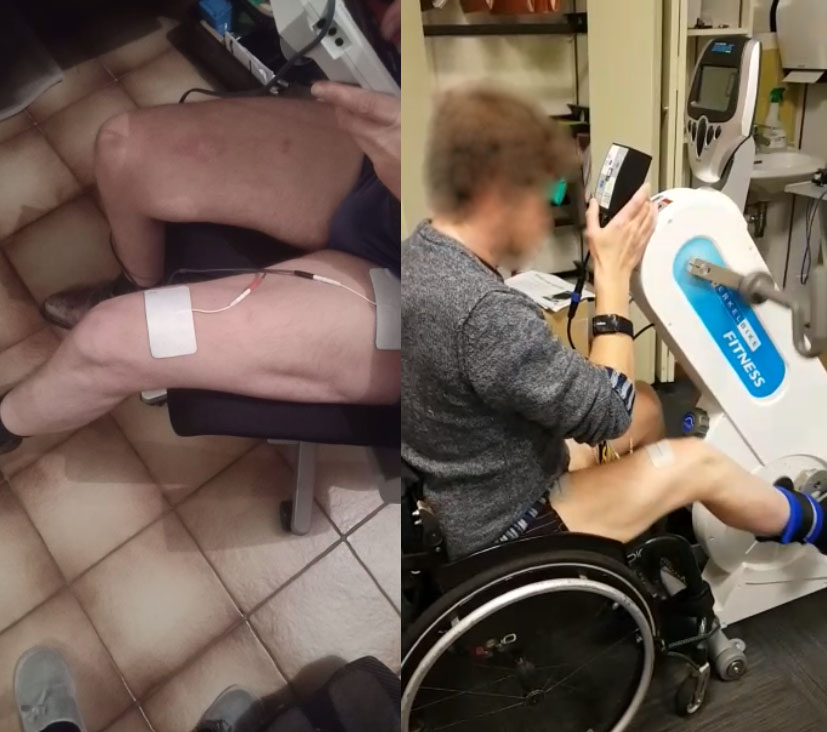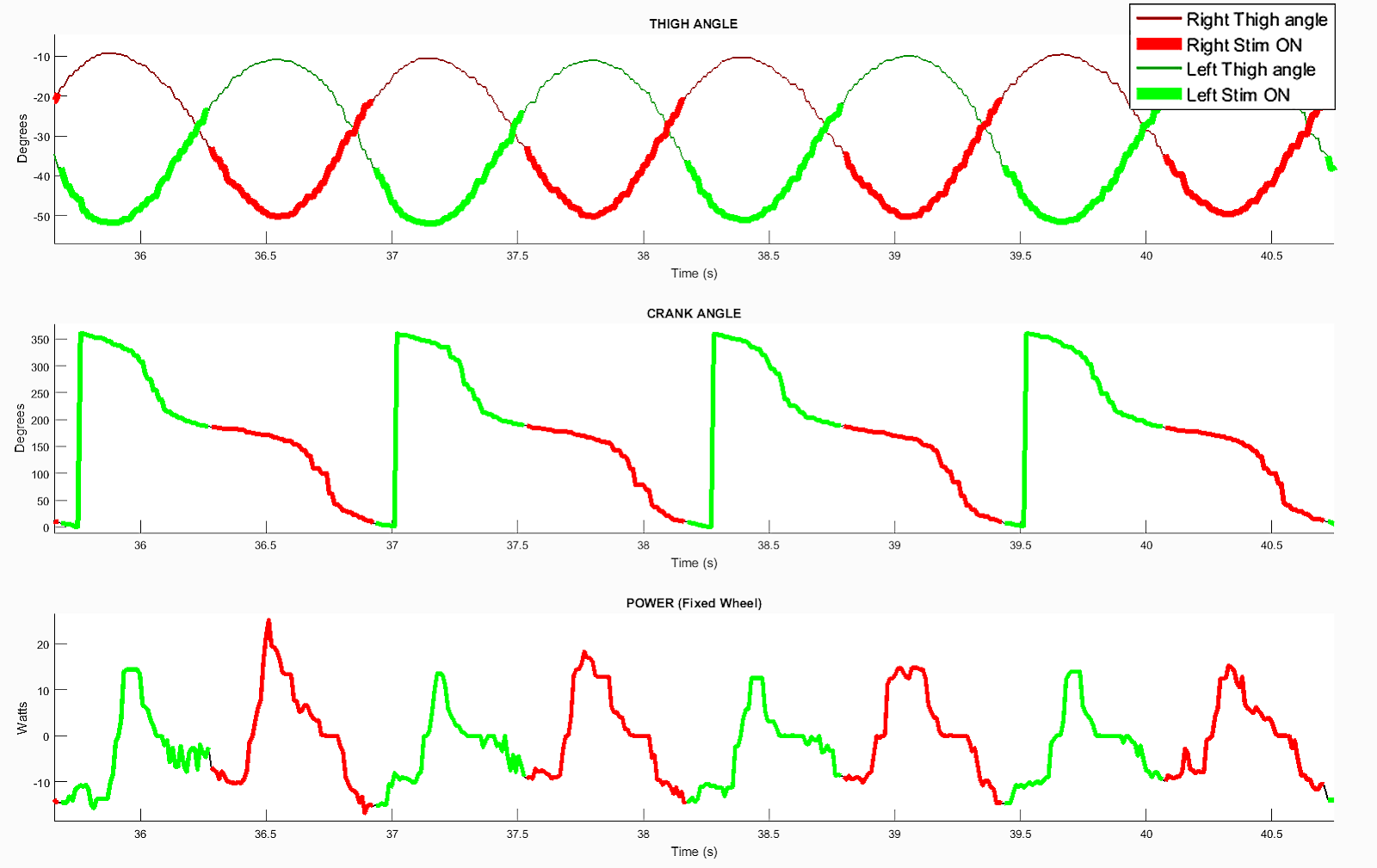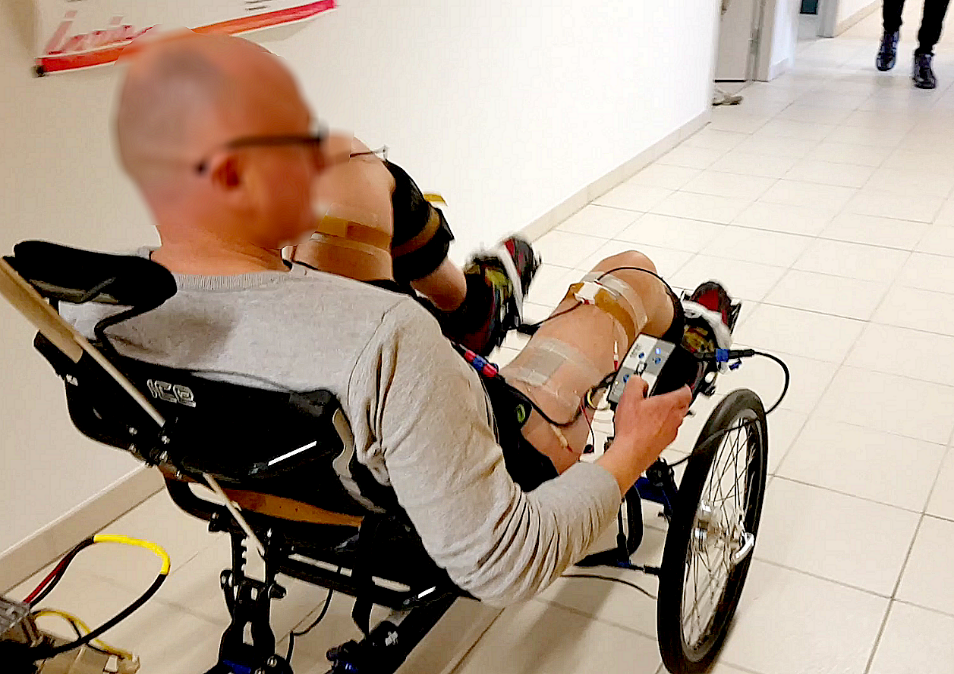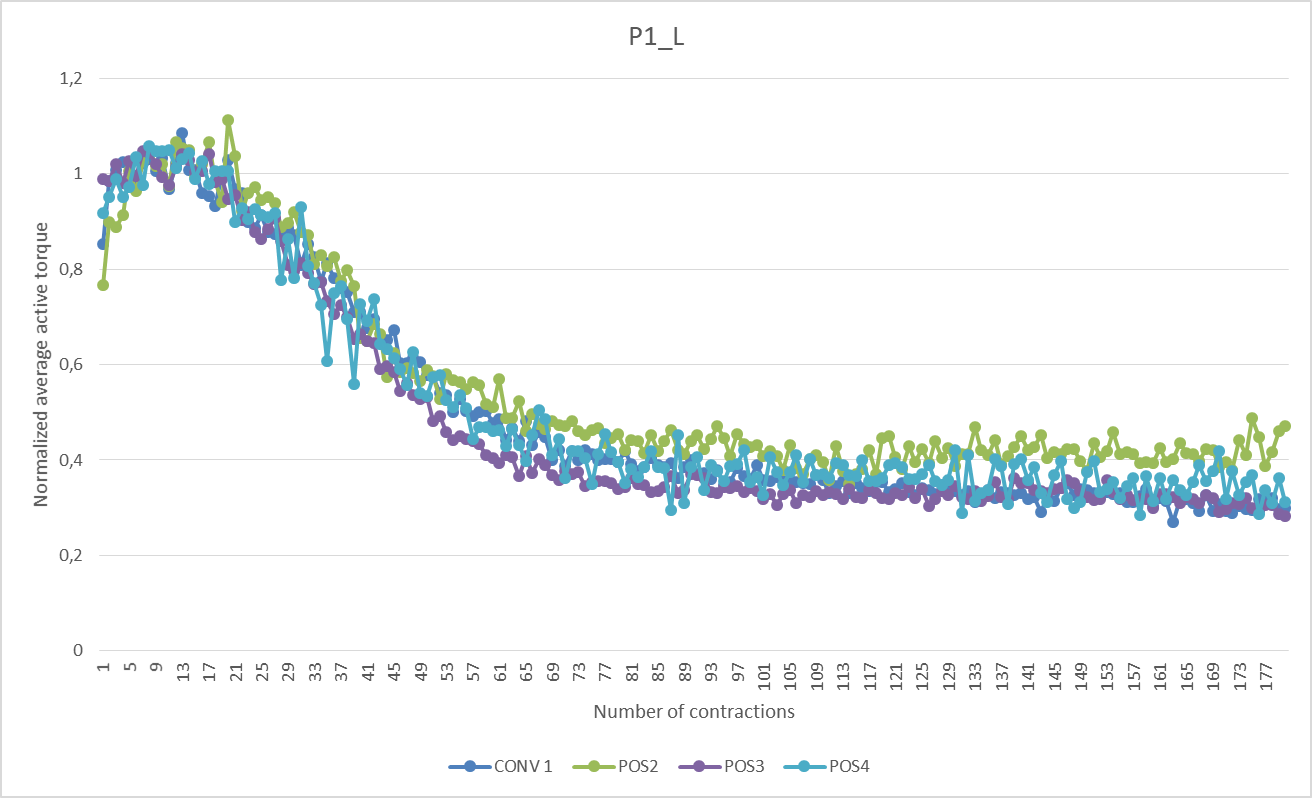Section:
New Results
FES-assisted cycling
Participants :
Benoît Sijobert, Ronan Le Guillou, Charles Fattal, Christine Azevedo, Martin Schmoll, Emerson Fachin-Martins [UnB, Brazil] , Henrique Resende [UFMG, Brazil] , David Lobato [UnB, Brazil] .
Our team is working for several years on FES-assisted cycling for individuals with spinal cord injury. We intend to improve cycling accessibility to a larger population in order to propose exercising and leisure activity to improve quality of life and self esteem.
On this context we have been working on three aspects this year: 1) improving training to be able to propose patients in rehabilitation centers a simplified and acceptable protocol to prepare muscles to cycling, 2) improving usability in a rehabilitation context to ease and simplify the access to FES-cycling, 3) better understanding fatigue phenomena to improve cycling performances.
A funding (EDF Foundation) has been obtained by our clinical partner "CRF La Châtaigneraie" to perform a clinical protocol to follow up the physical preparation of individuals with spinal cord injury to manage overground active pedaling after 4 months of 3 sessions per week training at home. The protocol has been approved by an ethical committee (§3.3). One of the participants will be involved in Cybathlon 2020 event. The inclusions began in September 2019. A longitudinal follow-up will allow to precisely assess the performances progress along the training period.
After the 4-months at home training the participants will be using the overground cycling platform that has been developed by our team (§5.2.2).
Figure
14. Muscular preparation for overground cycling training. Left: Participant executing strengthening program with conventional multichannel stimulator (CEFAR); Right: Participant performing endurance training on FES-ergocycle.
|
|
It has been shown that FES-cycling of subjects with Spinal Cord Injuries (SCI) results in physiological and psychological positive effects such as cardiovascular training, decrease in pressure sores occurrence and self-esteem improvements. However, the use of this technology has often remained restricted to indoor and stationary ergometers in clinical contexts, partly due to the small amount (10–25 W) of power produced and the requirement of experimented users to finely tuned the stimulation patterns needed to stimulate lower limb muscles with an adequate modality. Our latest study on this subject introduces a novel approach of a Functional Electrical Stimulation (FES) controller intended for FES-induced cycling based on inertial measurement units (IMUs). This study aimed at simplifying the design of electrical stimulation timing patterns while providing a method adapted to different users and devices. In most of the different studies and commercial devices, the crank angle is used as an input to trigger stimulation onset. We propose to use instead thigh inclination as the reference information to build stimulation timing patterns. The tilting angles of both thighs are estimated from one inertial sensor located above each of the knees. An IF-THEN rules algorithm detects online and automatically the thigh peak angles in order to start and stop the stimulation of quadriceps muscles depending on these events. One participant with complete paraplegia was included and was able to propel a recumbent trike using the proposed approach after a very short setting time. This new modality opens the way to a simpler and user-friendly method to automatically design FES-induced cycling stimulation patterns, adapted to a clinical use, to multiple bike geometries and user morphologies.
Using the online peak knee flexion algorithm developed in the study presented in last years section 6.2 to continuously detect this event, we validated a novel approach in order to trigger the quadriceps stimulation at the beginning of the pushing phase. These results can be seen in Figure 15. Enabling this method to take into account a possible sliding in seat position without requiring an accurate placement of the IMUs or a geometrical model of the individual [24].
Figure
15. Data sample illustrating the results over four pedalling cycles in home trainer condition. TOP: Left (green) and right (red) thigh tilting angles - MIDDLE: crank angle - BOTTOM: developed power. The two stimulation channels activation are highlighted.
|
|
Figure
16. Overground cycling. The participant was able to propel the recumbent trike over a 40 meter corridor.
|
|
Another important aspect concerning FES-cycling is the pilots ability to resist fatigue for a prolonged time. Muscular activation as a result of electrical nerve stimulation is known to introduce a rather quick onset of fatigue. Therefore different approaches have been tested in literature to reduce the effective stimulation frequency received by individual motor-units. Several studies were able to show improvements using distributed multichannel stimulation against conventional single channel stimulation. A direct comparison between the different techniques is difficult as all studies use different methods of quantifying muscular fatigue. Further most studies fail to mention measured absolute values during a contraction at maximum strength.
Therefore our team was designing a new testing protocol in collaboration with the University of Brasilia (CACAO Associate team) with the aim to assess muscular fatigue of currently published and new electrode positions against conventional single channel stimulation (baseline) in a more practical setting. The fatigue testing protocol was tailored to mimic 10 min FES-cycling at 50 RPM using an isokinetic dynamometer (Biodex System 4). Assuming a torque-production of 40 percent of the maximal torque-production-capacity of a well-trained quadriceps muscle to be sufficient for FES-cycling. The active torque produced at this starting level was measured in a series of contractions, tracking the decline of torque.
The study was conducted in Brasilia on 3 individuals expressing a complete spinal cord injury. All participants were enrolled in a FES-training program for about 14months. All participants were highly motivated and fulfilled the demanded inclusion criteria ensuring a safe execution of the protocol. For every subject both legs were measured individually leading to an overall sample size of n=6.
Currently the data-analysis is still in progress. The results of this study should lead to optimized stimulation techniques to prolong the onset of fatigue during FES-cycling.
Figure
17. Electrode configurations examined. Electrodes marked with “+” were the Anodes (reference electrodes). CONV: Standard electrode configuration 40 Hz delivered to one pair of electrodes; POS1: One channel with 40 Hz distributed over 4 electrodes – common anode; POS2: Two channels with each 40 Hz distributed via 4 electrodes – common anode; POS3: Three channels of 40 Hz each delivered to one electrode – common anode: POS4: Three channels with each 40 Hz distributed via 4 electrodes – common anode
|
|
Figure
18. Preliminary data retrieved of the left leg of patient 1. The average active torque of the first 20 contractions was used to normalize fatigue curves. POS1 was excluded from the figure due to exaggerated fluctuations in torque.
|
|







